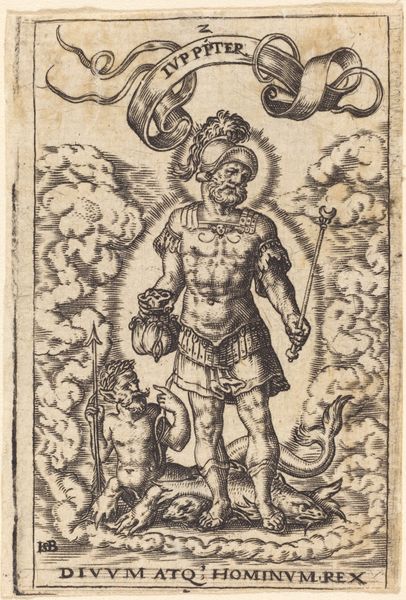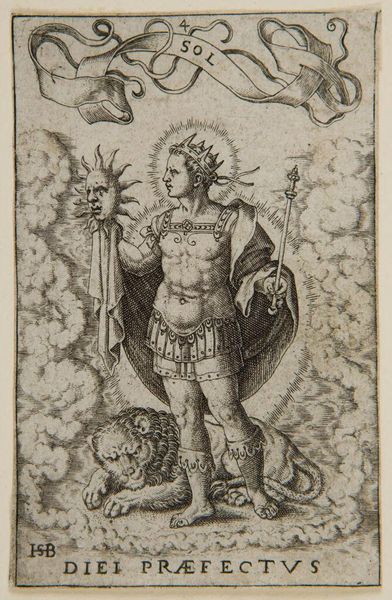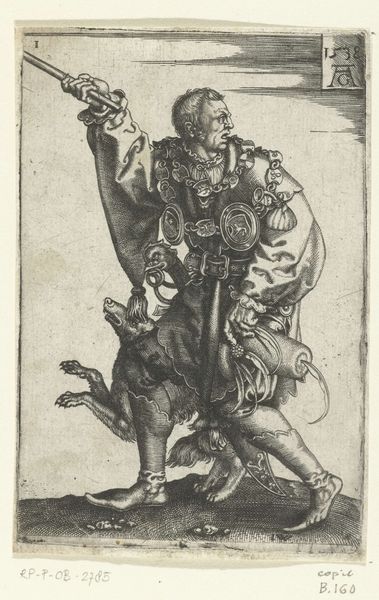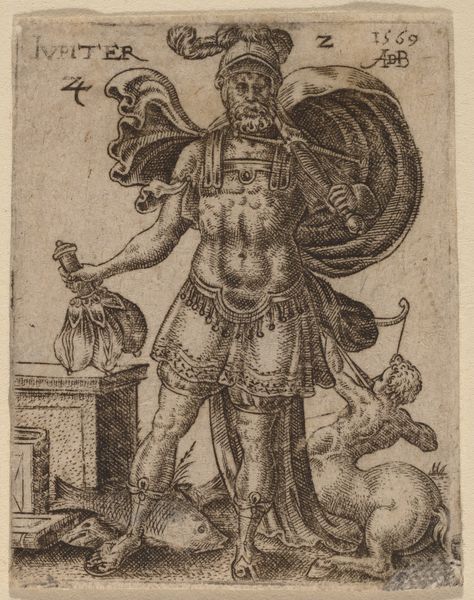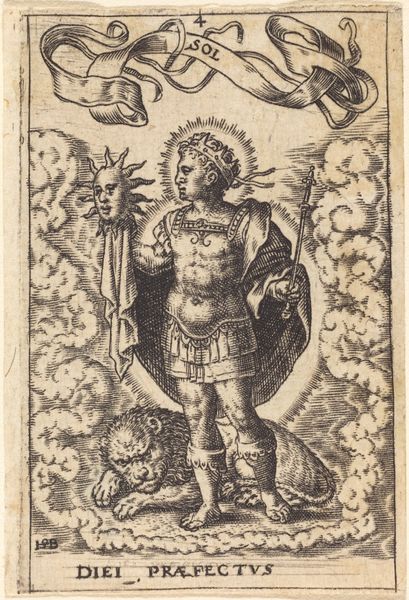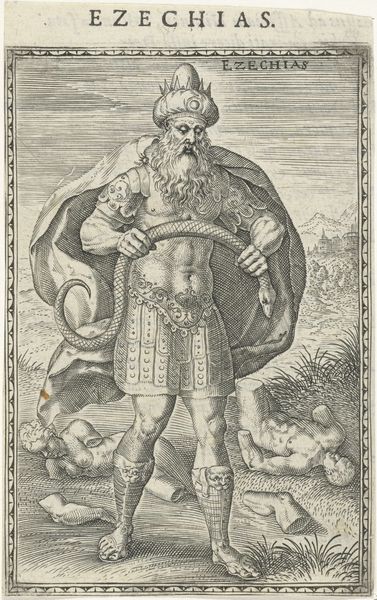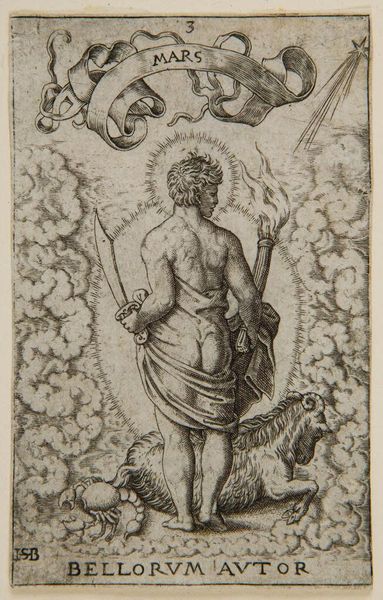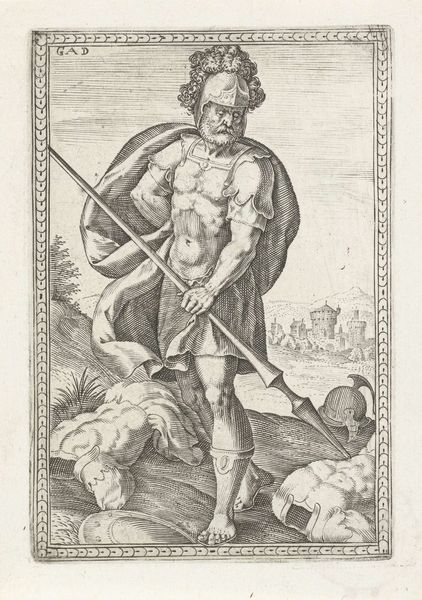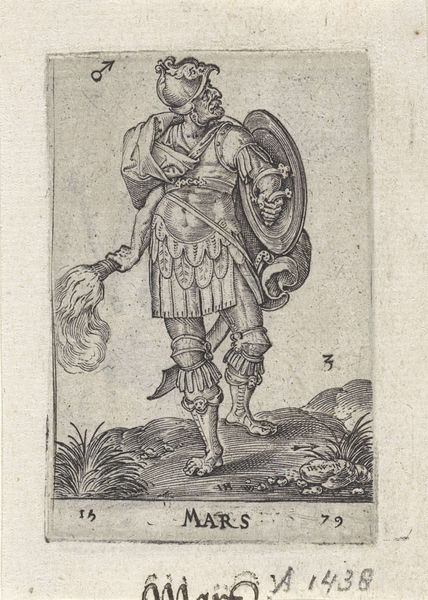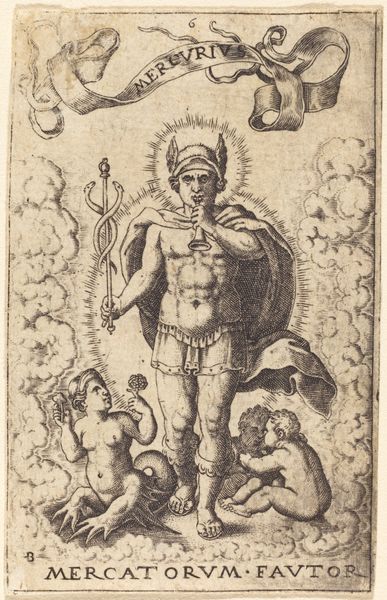
Copyright: CC0 1.0
Curator: Here we see Theodor de Bry’s “Jupiter,” an engraving in the collection of the Harvard Art Museums. What strikes you first about this piece? Editor: Immediately, I see a god of contradictions: the celestial halo around his helmet paired with the menacing, almost pitiful, figure at his feet. Curator: That contrast is key. De Bry, working in the late 16th century, was deeply engaged with classical iconography. Jupiter, here, is the king of the gods, a ruler of both the divine and earthly realms—note the Latin inscription below: "DIVVM ATQ HOMINVM REX". Editor: The money bag he holds is a powerful symbol. It speaks to worldly power, but also perhaps to its corruptibility, especially juxtaposed with the suffering implied by that chained figure. What is that creature? Curator: Likely a personification of one of Jupiter's conquered foes, bound by the god’s authority. Consider how it reflects the socio-political hierarchies of the time, specifically the subjugation and enslavement in colonized lands. Editor: Indeed. It makes you consider the cost of power, doesn't it? The artist masterfully weaves classical symbols with pointed commentary on the nature of authority. Curator: It's a potent reminder that even the most timeless images can speak volumes about their own era. Editor: Yes, I leave this viewing with a renewed sense of the weight these enduring symbols carry.
Comments
No comments
Be the first to comment and join the conversation on the ultimate creative platform.

